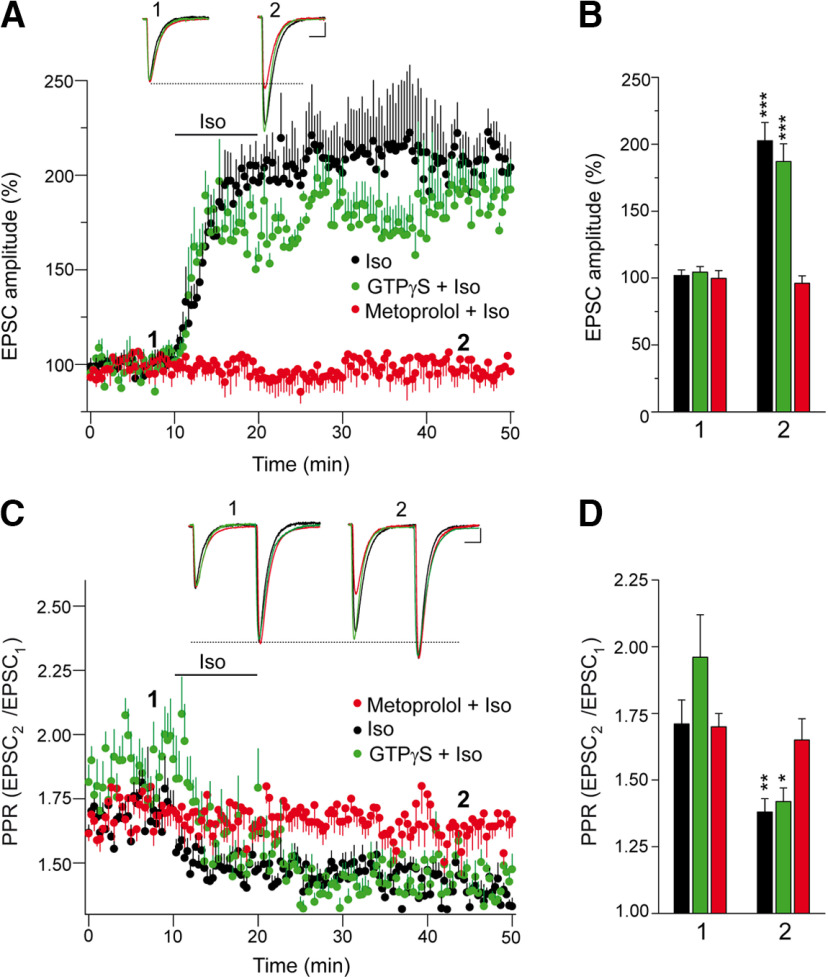Figure 2.
Isoproterenol potentiates synaptic transmission at PF–PC synapses by a presynaptic mechanism involving β1-adrenergic receptors. EPSCs were recorded from Purkinje cells after 0.05 Hz parallel fiber stimulation. A, The βAR agonist isoproterenol (100 μm, 10 min) induced a sustained increase in the EPSC amplitude that was sensitive to the specific β1AR antagonist metoprolol (60 μm, 30 min), yet was insensitive to the presence of GTPγS (1 mm, 15 min) in the recording pipette. B, Quantification of the changes in EPSC amplitude induced by isoproterenol. The data were measured 40 min after isoproterenol application (2) in the absence (n = 13 cells/13 slices, 6 mice, t = 7.075, df = 14) or the presence (n = 11 cells/11 slices/5 mice, t = 0.4426, df = 20) of metoprolol or GTP-γ-S (n = 11 cells/11slices/5 mice, t = 5.983, df = 11), and relative to the values before isoproterenol application (1). C, Changes in the PPR (EPSC2/EPSC1) induced by isoproterenol in the different conditions. D, Quantification of the changes in the PPR induced by isoproterenol (2) in the absence (t = 3.205, df = 18) and presence (t = 0.53, df = 20) of GTPγS (t = 3.221, df = 11) or metoprolol, and relative to the respective basal values (1). EPSC sample traces (A, C) represent the mean of six consecutive EPSCs at 0.05 Hz taken before and 40 min after treatment. Calibration: 50 pA and 15 ms. The data represent the mean ± SEM.

